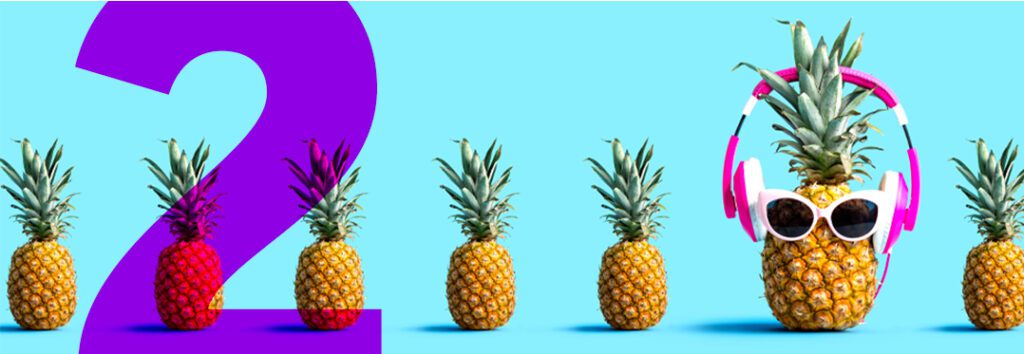As a Chief Marketing Officer, you know that adaptability is one of your most important skills. Your company constantly adjusts marketing objectives to keep up with the evolving free market. Your products are changing and improving, requiring new language and value propositions. Beyond that, you are constantly evaluating your marketing practices to ensure you maintain your primary KPI. When you do end up making colossal changes to your marketing practices, it’s to save time, money, and brainpower.
The rise of social media and its importance in modern marketing practices have undoubtedly played a role in how you approach meeting your goals. Although it’s been a key channel for a while now there’s still much to learn about utilizing your brand’s existing social presence to efficiently reach new audiences. Here are three concepts we want to make sure you’re aware of in 2022:
Localized Content Distribution

In the traditional world of digital marketing, If you wanted to improve your organic reach, you would focus your time and budget on growing your brand channels. You might spend hundreds of thousands of dollars on these brand awareness efforts knowing that you’re the official source of truth to your passionate audience. Improving efficiency in this area is essential to giving consumers an enticing call-to-action to order your product.
But what if there was a way to organically reach a new audience; without running hefty paid media campaigns or running the logistics on expensive partnerships to get your brand on other pages?
This is where localized content distribution comes in. If you have a network of retailers, or any sort of multi-location presence, you can build awareness by syndicating brand content to their social media and search destinations, reaching a local audience that’s already engaged with your products and likely to convert if presented eye-catching content of your products.
In other words, when you sell products through retailers, you’re reaching a larger localized audience of people than those who would purchase directly from you (the manufacturer). You can do the same thing with your social media content, by sharing brand content to your retailers’ social pages you can tap into a larger organic audience than the finite number of fans following your official brand channels.
There’s no question that your retailer’s social media audience is valuable. Since they already follow a storefront carrying your product, you know these customers are interested in your industry. They are likely to engage with your content, and some even have a history of converting into a paying consumer through the retailer that they already follow.
ThumbStopper® is a thoughtfully crafted solution for distributing brand curated content through their retailers’ social media and search destinations. If you’re interested in learning more, our social media experts are on standby to identify if localized content distribution is a good fit for your brand.
Be Proactive, Not Reactive

At times it might be tempting to focus on viral trends as a primary source of content. Your competitors may be capitalizing off of micro-trends and flooding the digital space you compete for. In the short term, this can be a successful strategy, but trends don’t last forever. Relying on consistently timing your entry to the trend correctly is not sustainable. You have a standout product and unique ideas on how to market it. You don’t need to participate in the same trends the rest of your industry is chasing, especially when it takes focus away from more impactful campaigns and practices that have performed regardless of the current climate.
Instead, lean into the new and exciting things going on at your company that your customers need to hear about. Maybe your products’ packaging has been redesigned and your team faces the exciting challenge of revitalizing your visual branding in supporting campaigns. Perhaps you’ve recently ventured into new social channels or are forming influencer partnerships. Regardless of how you’re currently adapting your marketing strategy, the impressions you make on your audience and how you establish yourself as an industry authority will outlast the life cycle of any trend.
Empower Your Creatives

You’ve carefully crafted a marketing team with a strong track record of providing results. You trust them to accurately represent the brand and execute marketing objectives. They have original ideas and are eager to push boundaries.
So, why are you shooting down their new ideas and format experimentation?
Deviating from tried-and-true methods is daunting. But experimenting with your content doesn’t have to be all or nothing. Approaching your team’s unconventional ideas with an open mind, even when they differ from your competitors recent activity, can lead to unforeseen opportunities.
Here’s our advice, when you experiment with new formats or step outside of your brand’s comfort zone, always build new content around consistent performance testing, not assumptions from your team’s experience in the industry. If you identify that these new content concepts are failing to provide a return on investment, re-evaluate your practices and formally determine if this format should continue. You might even find that the concept behind the content might be salvageable with some editing and a fresh perspective. You may have well-developed instincts for what will resonate with consumers, but don’t let that dictate your decisions. Supporting your experience in the field with real time performance testing will keep your analysts impressed, and fresh concepts in constant rotation.



